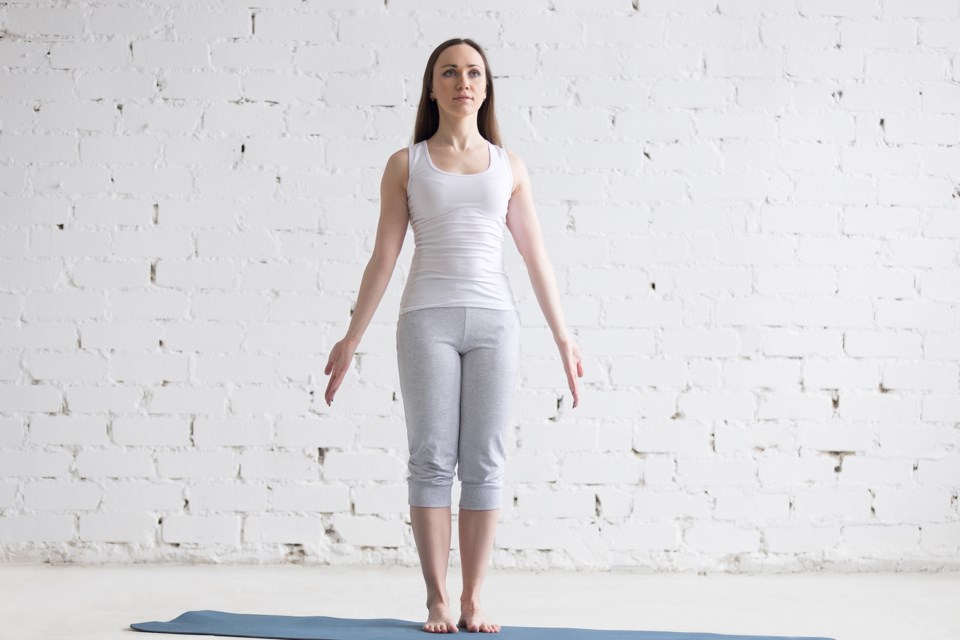This article, written by Jennifer J. Heisz, McMaster University, originally appeared on The Conversation and has been republished here with permission:
Worried about COVID-19? You may be putting yourself at undue risk, because chronic anxiety suppresses the immune system and increases our risk for infection.
The psychological impact of the COVID-19 pandemic is causing incredible distress. I ran into a friend at the grocery store the other day. She was wiping down her cart with antiseptic. Under normal circumstance, this behaviour would seem bizarre, but in the current COVID-19 climate, it has become acceptable.
Although it is important to be prepared during this pandemic, we do not need to panic. Physical activity can help protect the immune system from the effects of stress.
Fear of the unknown
As an associate professor in the department of kinesiology at McMaster University, I direct a team of researchers in the NeuroFit Lab, where we’ve shown that psychological distress can compromise mental health.
Anxiety about the unknown (such as our risk of COVID-19) can hyperactivate the fear centre in the brain called the amygdala. In terms of evolution, this is one of the oldest parts of the brain and its operations are quite primitive; it acts like a trigger-happy alarm that interfaces with the stress system to keep our body and mind on high alert for as long as we are feeling anxious. Research shows that the mere suggestion of danger, even if it never is experienced, is enough to trigger the amygdala and activate the stress response. This is what keeps people awake at night, lying in bed worrying about COVID-19.
The problem is that chronic activation of the stress systems can damage our cells and upset many of the body’s functions. Our immune system bears the brunt. Although psychological stress is not pathogenic per se, the damage it causes to the body’s cells triggers an immune response that makes us more susceptible to a foreign pathogen. This may increase our risk for infection with SARS-CoV-2, the coronavirus that causes COVID-19.
Worried sick
The immune system acts like border security, patrolling the body for cells that are foreign and harmful to it. It works a lot like the Nexus or Global Entry programs for pre-approved travellers; anyone enrolled in the program has their iris scanned to quickly confirm their identity for fast border crossing. But instead of iris scanning, the immune system scans the outer surface of a cell for its biological passport, or what scientists call a motif.
The body’s cells have a motif (a “self” motif) that’s different from the “non-self” motif of foreign cells and pathogens, like SARS-CoV-2. This non-self motif is known as a pathogen-associated molecular pattern (PAMP).
Another type of motif is the “damaged self” motif, known as a damage-associated molecular pattern, or DAMP. This motif is expressed by a damaged or dying cell that no longer serves the body. Stress damages the body’s cells, transfiguring self motifs into damaged self motifs. This elevates inflammation throughout the body in a similar way as if it were infected. This response, in the absence of an actual infection, is called a sterile immune response.
Chronic over-worrying about COVID-19 can intensify our vulnerability to viruses by creating an imbalance in immune function. This is because the immune system reacts to multiple breaches in immunity in a similar way that airport security reacts to multiple breaches in safety, by escalating the response. Think back to how vigilant airport security became after 9/11, implementing the strictest screening procedures for all passengers and luggage.
Excessive anxiety about COVID-19 can trigger an immune response that increases inflammation and readies the immune system’s equivalent of special forces, known as inflammasomes. If SARS-CoV-2 acts like other viruses, then upon infection the inflammasomes will be called to action to escalate inflammation even further. But too much inflammation does more harm than good; it deregulates immune function, increasing our risk of a viral infection.
My lab recently demonstrated how quickly our health declines under chronic stress. We tracked sedentary but otherwise healthy students during the weeks leading up to their final exams, and we observed how six weeks of stress gave rise to the symptoms of depression.
Resisting the effects of anxiety
What can we do to prevent panic and bolster immune protection?
Physical activity can protect your body from chronic stress-induced inflammation.
In our study, during that same stressful six-week period, we enrolled some of the students in a new exercise program in which they cycled on a stationary bike at moderate intensity for approximately 30 minutes, three times per week. Moderate intensity exercise is about 40 per cent of maximum workload: the point at which someone can still talk, but can’t sing.
Blood samples were collected to track changes in inflammation. Although the exercisers were exposed to the same psychological stressors as the sedentary students, their inflammation remained low and their mood remained high with no increase in symptoms of anxiety or depression.
But the intensity of the exercise mattered. Higher intensity exercise was not as effective at protecting mental health or reducing inflammation. The vigorous nature of the intense exercise may have exacerbated an already stressed-out system, especially in individuals who were not accustomed to exercise.
The key take-away from our research: a brisk walk, jog or bike ride can help keep you calm and healthy during these uncertain times so you can be prepared without the panic.![]()
Jennifer J. Heisz, Associate Professor in Kinesiology and Associate Director (Seniors) of the Physical Activity Centre of Excellence, McMaster University
This article is republished from The Conversation under a Creative Commons license. Read the original article.



